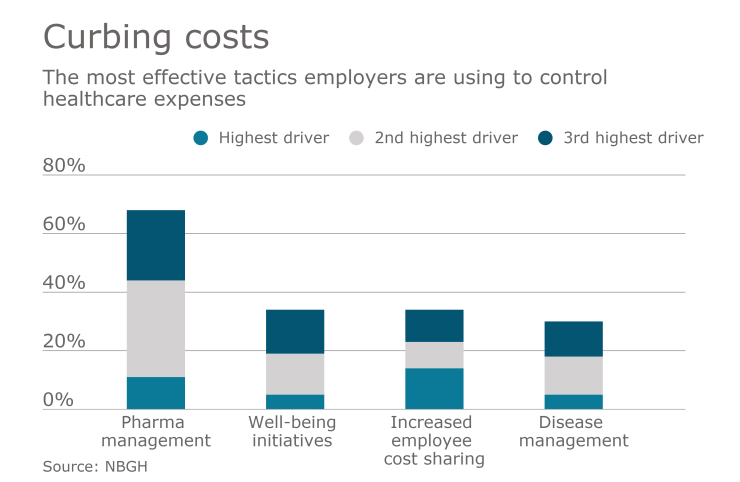Employers better step up their employee retirement planning efforts: According to Fidelity Investments’ latest annual cost estimate, a 65-year-old couple retiring this year would need $280,000 to cover healthcare and medical expenses throughout their retirement. That’s a 2% increase from 2017, and a whopping 75% increase from Fidelity’s first estimate in 2002.
Women are projected to need more money in retirement than men because they have longer life expectancies. In Fidelity’s estimate, a man would need $133,000 for healthcare expenses in retirement, while a woman would need about $147,000.

“Despite this year’s estimate remaining relatively flat, covering healthcare costs remains one of the most significant, yet unpredictable, aspects of retirement planning,” says Shams Talib, executive vice president and head of Fidelity Benefits Consulting. “It’s important for individuals to educate themselves and take steps while working to ensure they are prepared to address these costs. Otherwise, people risk having to dip into more of their savings than originally anticipated, potentially impacting their overall retirement lifestyle.”
See also:
Fidelity’s healthcare cost estimate is based on metrics that shift depending on the economy and changes in government regulations. The 2% increase to this year’s estimate was the smallest annual increase since 2014, “which indicates that many of the factors contributing to the estimate, such as prescription out-of-pocket drug expenses and Medicare premiums, have remained relatively flat over the last year,” Fidelity found.
There’s other good news, too: Employees are saving more for retirement, which could help ease the sting of healthcare expenses. An analysis of 401(k) accounts managed by Fidelity found that the average savings rate has increased almost 10% since 2013.
In a recent poll of individuals between the ages of 50 and 64, who had retired in the last three years, Fidelity asked how they planned to cover medical expenses until they were eligible for Medicare. Most respondents said they had some form of healthcare coverage to cover expenses until they were eligible for Medicare. Still, 36% of respondents said they were paying $500 per month or more in healthcare premiums.
When early retirees were asked how they pay for their out-of-pocket premiums, copays and deductibles, 49% said they took it out of personal savings; 24% said they were relying on Social Security income; and 15% said they were relying on their retirement accounts. Only 14% were using a health savings account to cover costs, Fidelity found.
The Fidelity report has implications for employers, who increasingly have been discussing with employees how to manage healthcare costs in retirement. More employers have been pushing health savings accounts; the money saved in an HSA can be used for medical expenses in retirement if a person doesn’t use up their balance every year. Any extra funds are invested, just like they would be in a typical retirement plan.
“Individuals who are faced with the prospect of retiring early, regardless of the reason, will need to educate themselves on the options available to bridge the gap to Medicare eligibility to help pay for the extra healthcare expenses they’re likely to incur during this period,” Talib says.





